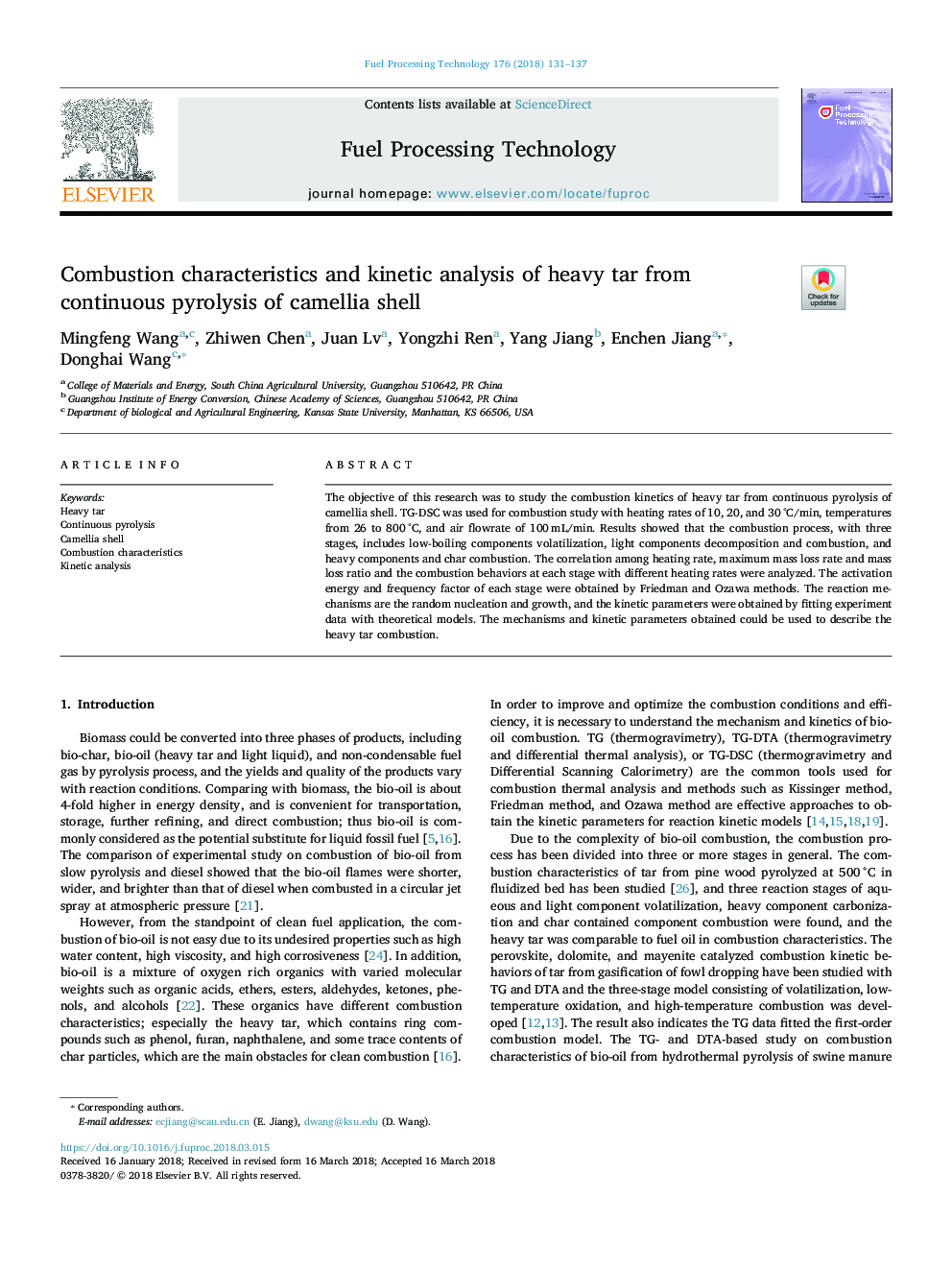| Article ID | Journal | Published Year | Pages | File Type |
|---|---|---|---|---|
| 6656362 | Fuel Processing Technology | 2018 | 7 Pages |
Abstract
The objective of this research was to study the combustion kinetics of heavy tar from continuous pyrolysis of camellia shell. TG-DSC was used for combustion study with heating rates of 10, 20, and 30â¯Â°C/min, temperatures from 26 to 800â¯Â°C, and air flowrate of 100â¯mL/min. Results showed that the combustion process, with three stages, includes low-boiling components volatilization, light components decomposition and combustion, and heavy components and char combustion. The correlation among heating rate, maximum mass loss rate and mass loss ratio and the combustion behaviors at each stage with different heating rates were analyzed. The activation energy and frequency factor of each stage were obtained by Friedman and Ozawa methods. The reaction mechanisms are the random nucleation and growth, and the kinetic parameters were obtained by fitting experiment data with theoretical models. The mechanisms and kinetic parameters obtained could be used to describe the heavy tar combustion.
Related Topics
Physical Sciences and Engineering
Chemical Engineering
Chemical Engineering (General)
Authors
Mingfeng Wang, Zhiwen Chen, Juan Lv, Yongzhi Ren, Yang Jiang, Enchen Jiang, Donghai Wang,
